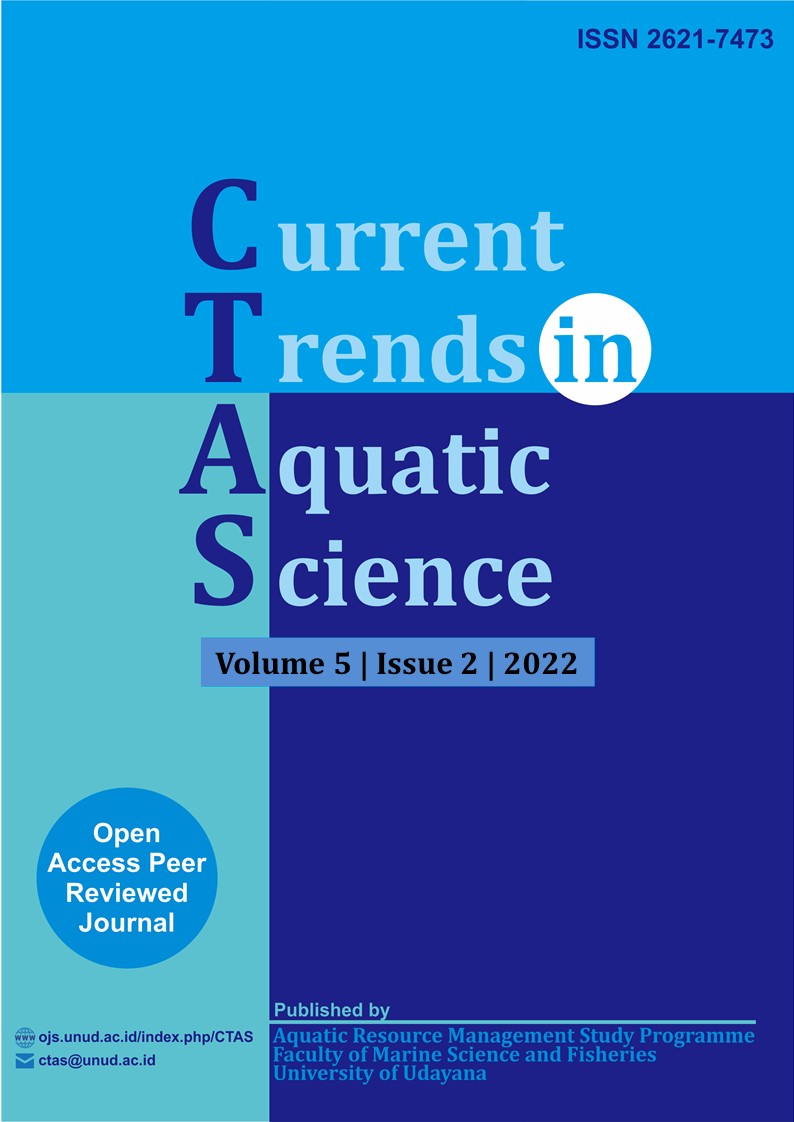Fluktuasi Nilai Fosfat dan Nitrat pada Pembesaran Ikan Nila Yang Diberi Tanaman Seledri (Apium graveolens)
Abstract
Aquaculture activities leads to increase the nitrate and phosphate due to nutrient input from the leftover fish farming feed. Nitrate and phosphate enrichment can be minimized by using concept of aquaponics and growing aquatic plants around the cultivation area. This study tries to find out the fluctuation nitrate and fosfat value on tilapia fish growing given celery (Apium graveolens) in tilapia fish farm. Celery plants were planted with three different treatments, namely the plants were planted using a flannel wick, the roots touched the water surface, and submerged beyond the plant roots to the stems. The results of observations for 1 month showed the highest average growth rate of celery (A. graveolens) in treatment A and the lowest in treatment C. The highest relative growth was in treatment A and the lowest was in treatment C. The highest survival was found in A and the lowest was in treatment C. The best phosphate absorption was in treatment B with 0.32 mg/L, and the lowest was in treatment C with 0.00 mg/L. The best nitrate uptake was in treatment A with 0.66 mg/L, and the lowest was in treatment B with 0.84 mg/L. The results of the One-Way ANOVA statistical test with Duncan's follow-up test showed significantly different treatments for phosohate and nitrate.


